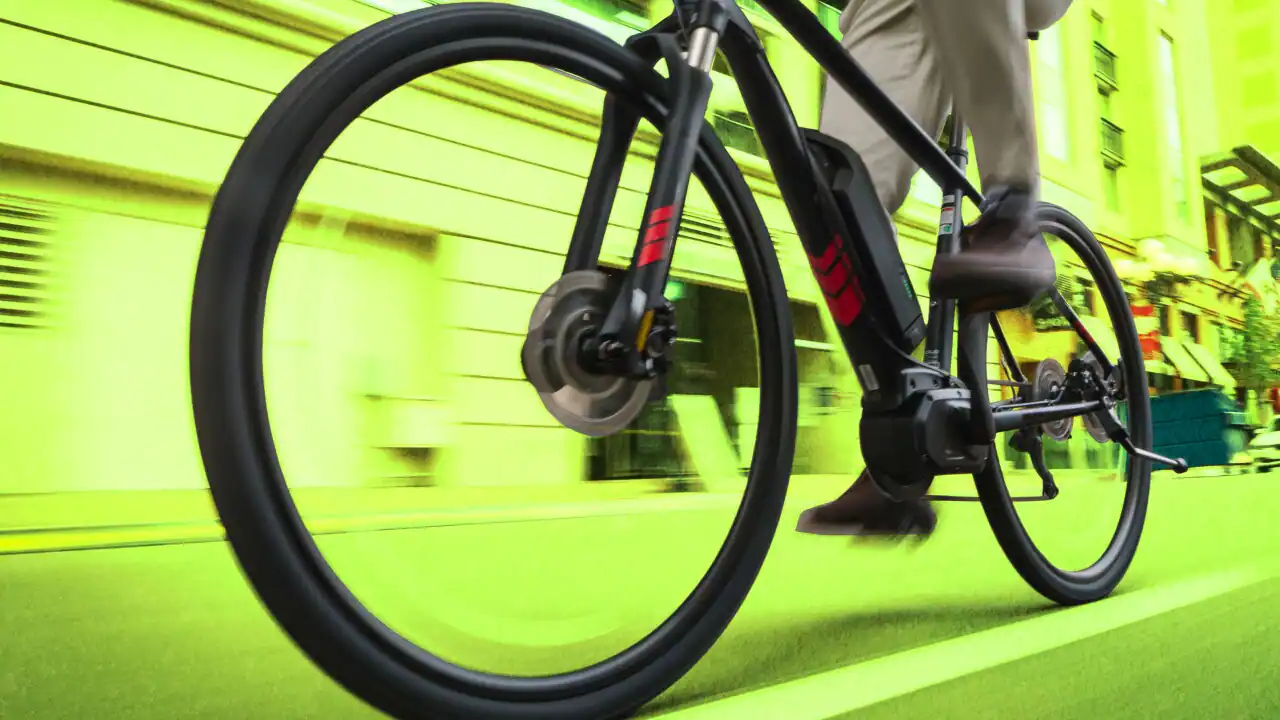By Elfy Scott
Copyright sbs

Daniel (not his real name) said that after he bought two e-bikes for himself and his wife from a store in Sydney, he decided to hack them to bypass their built-in speed restrictions. After watching some instructional videos online and buying a tool for the job, he was able to modify the bikes so their motors continue to run past their legal 25km/h limit, which applies across Australia. Daniel told The Feed the e-bike motors can now run up to 45km/h — although they generally ride at between 30 and 35km/h on their morning commutes to work. “We find the speed limit of 25km/h too slow. This is particularly a problem on the road when you are mixing with cars,” he said. Daniel said that when e-bike riders are forced to ride alongside traffic, the vast difference in speed can create dangerous situations. While he said he has safety concerns about riding his hacked e-bike, he doesn’t see the risks as distinct from riding a normal bike — and overall, the couple enjoy the health, convenience and environmental benefits of riding e-bikes. Modified e-bikes have started to come under scrutiny in Australia recently. While e-bike laws in all states and territories specify that e-bike motors have to cut out past 25km/h, many of the e-bikes in Australia are relatively easy to hack — like Daniel’s e-bikes. There are plenty of online instructional videos showing riders how they can hack bikes to increase speed limits, with some e-bike speed limits raised to up to 90km/h. A number of companies in Australia — including some e-bike manufacturers — will also provide instructions, accessories or services to hack e-bikes' speed limits on the condition that riders sign a waiver to only ride them on private property. According to market research group Mordor Intelligence, sales and imports of e-bikes have tripled in Australia since 2020. E-bikes with motors that allow speeds of over 25km/h or exceed legal motor power limits are allowed to be ridden on private property in all states and territories. However, once they’re being ridden on public roads, they are considered unregistered motorbikes. As the number of e-bikes in Australia has risen dramatically in recent years, the number of injuries and deaths caused by e-bike accidents has risen as well. St Vincent’s Hospital in Sydney said it had seen a significant rise in the number of trauma cases in its emergency department related to e-bikes in the past few years. In 2023, the St Vincent’s emergency room treated 45 trauma cases related to e-bikes, whether modified or not. So far this year, there have been 135 cases. Dr Tom Crofts, an emergency specialist at the hospital, told The Feed the trauma cases from e-bikes seen in the emergency room are generally “blunt force trauma” injuries from rapid deceleration. “We see quite severe trauma almost on a weekly basis now associated with e-bikes,” he said. “Often cases that require surgical intervention and ICU admission and that is becoming more frequent as time goes by.” Crofts said it's “obvious” when patients have been hurt while riding modified e-bikes. “Some of the injuries that we do see, you can safely assume that they’re going faster … above what they are capped at, which is the 25 kilometre an hour speed limit.” There have also been deaths associated with modified or illegal e-bikes in recent years in Australia. In May this year, 69-year-old Victorian pedestrian William Lothian was killed after being hit by a man riding a modified e-bike. Analysis from international statistics has revealed that e-bikes are associated with more fatalities than standard unpowered bikes, which has proved to be an emerging issue in some countries with a rapidly growing number of e-bikes. One researcher from the University of Melbourne looked at statistics of deaths of e-bike riders as compared to those riding standard bicycles in China and Denmark and found e-bike riders face a significantly higher risk of dying. These incidents have raised community concerns around modified and illegal e-bikes, prompting politicians to try to address gaps in Australia’s e-bike legislation. Biking advocacy groups such as the Bicycle Network say amendments to the Road Vehicles Standards Act in 2021 that removed e-bikes from the legislation mean e-bikes don’t fall under the definition of a road vehicle. This means that e-bikes don't have to meet key safety standards when imported and easily hackable e-bikes are easy to bring into the country. For example, even though the legal power of an e-bike motor on roads in NSW is 500 watts or in Queensland and Victoria 250 watts, e-bikes with motors of up to 6,000 watts can be imported into Australia. Earlier this month, independent federal MP Sophie Scamps introduced a private member's bill known as the Safer E-Bikes bill, seeking to address the legislative gaps. Scamps' electorate of Mackellar on Sydney's northern beaches has been a particular target of police enforcement of e-bike laws, with police conducting a month-long crackdown on modified e-bikes there earlier this year. There are significant penalties associated with e-bikes that run too fast — people caught riding illegally modified e-bikes in NSW can attract fines starting at $723. Introducing the bill, Scamps — who previously worked as an emergency room doctor — said technology has outpaced safety and import regulations. She called for e-bikes to once again come under the Road Vehicles Standards Act. “While states and territories are responsible for setting speed limits and writing regulations on our roads and footpaths, the federal government also has a clear role to play in regulating and supporting safe e-bikes,” she said. Many biking advocacy groups support legislation that restricts the e-bikes that can enter Australia, however some argue that speed limits should be increased to 32km/h, in line with US standards. Allison McCormack, chief executive of the Bicycle Network, which supports keeping the 25km/h speed limit, told The Feed Australia needs standards for the e-bikes being imported. “What we’re seeing is illegal e-bikes travelling up to 60,90km/h,” she said. “This is why legislation is so important. We need to stop the ability to simply buy something that is an illegal motorbike and bring it into Australia and then subsequently they’re being used on the roads.” Daniel said he doesn’t mind the idea of more regulation on the e-bikes being imported — but he still feels the current speed limits set are unreasonable for everyday e-bike riders. “I have seen a lot of crazy big e-bikes that look like motorbikes,” he said. “I don’t have any issue with a crackdown on those bikes. I do however feel strongly that the 25km/h speed limit is too slow.”



